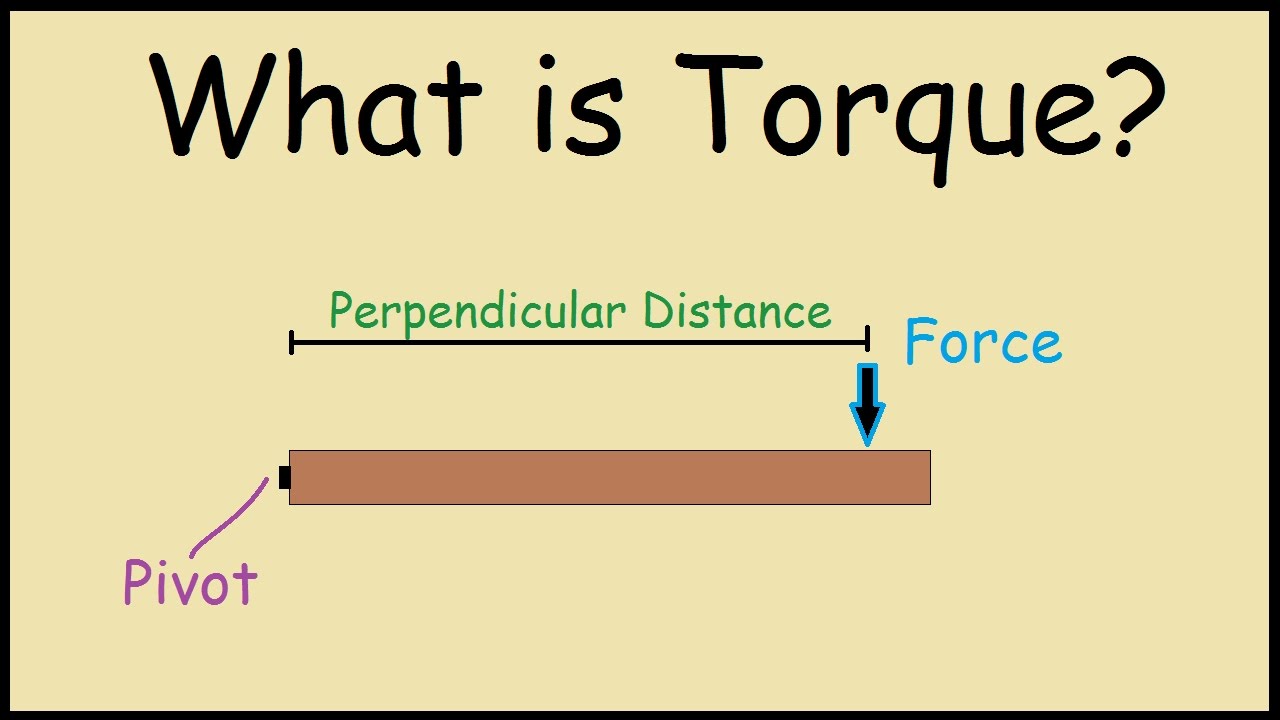
torque
An introduction to torque
Name: Own Teacher
Email: info@ownteacher.com
Created At: 28-10-2023
torque:-
Torque is a measure of the tendency of a force to rotate an object around an axis or pivot point. It is a crucial concept in physics and engineering, especially in the study of rotational motion. Torque is denoted by the symbol "τ" and is measured in units of Newton-meters (Nm) in the International System of Units (SI).
The formula for torque is:
τ = r * F * sin(θ)
Where:
- τ is the torque (in Nm).
- r is the distance from the axis of rotation to the point where the force is applied, known as the lever arm or moment arm (in meters).
- F is the force applied (in Newtons, N).
- θ is the angle between the force vector and the lever arm vector (in radians).
Here's an explanation of the components:
Distance (r): The lever arm represents the perpendicular distance between the axis of rotation and the point where the force is applied. A longer lever arm increases the torque for the same force.
Force (F): This is the applied force that acts on an object. The direction of the force affects the torque, as it determines how effectively the force can cause rotation.
Angle (θ): The angle θ between the force vector and the lever arm vector is important. Torque is maximized when the force is applied at a right angle (90 degrees) to the lever arm. In this case, sin(90°) equals 1, and torque is simply τ = r * F.
To understand the concept better, imagine trying to turn a wrench. The force you apply at the end of the wrench's handle creates torque. If you apply the force perpendicular to the handle, you maximize the torque and make it easier to turn a stubborn bolt.
In summary, torque is a rotational force that depends on the force applied, the distance from the axis of rotation, and the angle between the force and lever arm. It is essential in various applications, from machinery and engineering to understanding the behavior of objects in rotational motion.
Types of Torque
Torque can be either static or dynamic. Static torque is a torque that does not produce an angular acceleration. A few examples of static torque are as follows:
• A person pushing a closed-door is applying a static torque because the door isn’t rotating despite the force applied.
• Pedalling a cycle at a constant speed is also an example of static torque as there is no acceleration.
The drive shaft in a racing car accelerating from the start line exhibits dynamic torque because it must be producing an angular acceleration of the wheels, given that the car is accelerating along the track.
To explain torque in detail let us consider the figure.
- We can see that the net force on the body is zero if the magnitude of forces F1 and F2 are equal.
- Hence, the body is in translational equilibrium.
- But it tends to rotate, thus the turning effect produced by force is known as moment of force or torque.
Now we will consider the example of a door and try to formulate the equation for torque.
- If we apply force closer to the hinge, then a larger force is required to rotate the door.
- Also, it depends on the direction in which the force is being applied.
- If it is perpendicular to the line joining the hinge and the point of application of force then a smaller force is required.
How Is Torque Calculated?
A simple way to calculate the magnitude of the torque is to first determine the lever arm and then multiply it times the applied force.
Now, from the above observation, we conclude that the torque produced depends on the magnitude of the force and the perpendicular distance between the point about which torque is calculated and the point of application of force. So, mathematically torque is represented as:
where r is the length of the lever arm and θ is the angle between the force vector and the lever arm.
Measurement of Torque
The unit of torque is Newton–meter (N-m). The above equation can be represented as the vector product of force and position vector.
So, as it is a vector product hence torque also must be a vector. Using vector product notations we can find the direction of torque. We will consider an example to see how to calculate torque.
Frequently Asked Questions – FAQs
Q1.
What is the difference between torque and moment?
Torque is a special case of moment, such that it relates to the axis of the rotation driving the rotation, whereas moment relates to being driven by an external force to cause the rotation.
Q2.
Is torque energy?
No, torque is not energy.
Q3.
How does torque differ from force?
Torque is a counterpart of force in rotational mechanics. The basic difference between them is that torque is the ability of a force to produce a twist around an axis.
Q4.
What is the difference between torque in an electric medium and torque in a magnetic medium?
Torque is defined as the product of force and the perpendicular distance between the point of application of force and the pivot point. Torque in an electric medium means force experienced in an electric field. Similarly, torque in a magnetic medium is the force experienced in a magnetic field.
Q5.
What are some examples of torque in everyday life?
Opening a bottle cap or turning a steering wheel are examples of torque.
Comment List
Leave a Comment.



